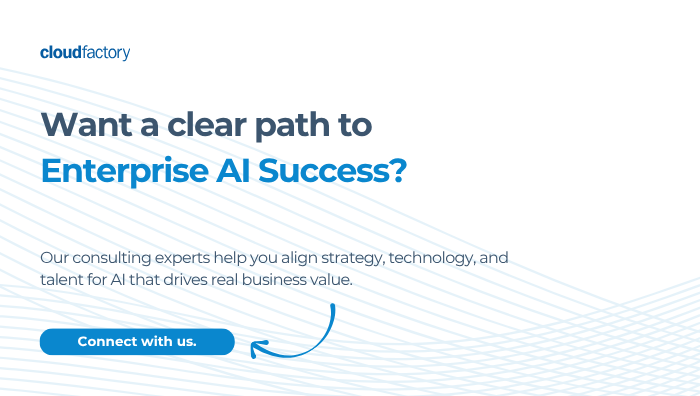A groundbreaking MIT study recently sent shockwaves through the business world, revealing that 95% of AI pilot projects fail to deliver measurable financial returns. While investors panicked and tech stocks tumbled, the real story lies deeper than surface-level headlines suggest.

The problem isn't AI technology itself—it's how organizations approach AI implementation. After analyzing 300 AI projects across 150 companies, MIT's NANDA Initiative uncovered critical gaps between AI potential and business reality. For enterprise leaders navigating digital transformation mandates, these findings reveal exactly what separates successful AI deployments from costly failures.
Understanding these failure patterns isn't just academic—it's essential for any organization serious about AI adoption. Companies that recognize and address these challenges early position themselves for the 33% success rate that comes with strategic implementation, while those that ignore them join the 95% failure statistics.
Lack of Organizational Readiness
Most organizations jump into AI without preparing their foundation. The MIT study found that companies often treat AI as a plug-and-play solution, expecting immediate results without addressing fundamental structural and cultural barriers.
Organizational readiness extends far beyond purchasing AI tools. It requires establishing clear governance frameworks, defining success metrics, and ensuring leadership alignment across departments. Companies that succeed with AI typically spend months preparing their organizational structure before deploying their first model.
Consider how CloudFactory's AI Engine addresses this challenge by providing comprehensive operational management and governance frameworks from day one. This approach ensures organizations build the infrastructure needed to support AI operations before deployment, not after problems emerge.
The readiness gap explains why startups often outperform established enterprises in AI adoption—they build AI-ready processes from the ground up rather than retrofitting existing bureaucratic structures.
Poor Problem Selection
The MIT research revealed that companies consistently misidentify which business challenges are suitable for AI solutions. Many organizations apply AI to problems that don't require artificial intelligence or select use cases that offer minimal business impact.
Successful AI deployment requires careful problem selection based on data availability, measurable outcomes, and genuine business value. The study found that companies deploying AI in back-end processes achieved better ROI than those focusing primarily on customer-facing applications like marketing and sales.
Effective problem selection involves evaluating whether AI provides a meaningful advantage over existing solutions. Questions like "Do we have sufficient quality data?" and "Can we measure success objectively?" separate viable AI projects from expensive experiments.
According to the research, companies that succeeded with AI spent significant time identifying high-impact use cases where AI could deliver measurable improvements, rather than applying AI broadly across multiple areas simultaneously.
Governance and Oversight Gaps
Without proper governance structures, AI projects operate in organizational silos, lacking the oversight needed for sustainable success. The MIT study emphasized that companies with robust governance frameworks achieved significantly higher success rates than those operating AI projects independently.
Effective AI governance encompasses risk management, compliance monitoring, and performance tracking. Organizations need clear protocols for model validation, bias detection, and performance degradation monitoring throughout the AI lifecycle.
Many failed projects lacked basic oversight mechanisms, resulting in models that worked in testing environments but failed when deployed at scale. Governance gaps also create compliance risks, particularly in regulated industries where AI decisions impact customer outcomes.
Successful organizations establish AI governance committees with cross-functional representation, ensuring technical teams collaborate with business stakeholders, legal departments, and compliance officers from project inception.
Data Quality and Access Challenges
The research confirmed what data professionals have long suspected: poor data quality remains a primary barrier to AI success. Companies often discover data limitations only after investing significant resources in AI development.
Data challenges extend beyond quality to include accessibility, governance, and integration issues. Many organizations struggle with data silos, inconsistent formats, and inadequate data pipeline infrastructure needed to support production AI systems.

The MIT study found that successful AI deployments typically involved extensive data preparation phases, often consuming 60-80% of project resources. Organizations that underestimated data requirements invariably faced project delays or outright failures.
Companies achieving AI success invest in comprehensive data strategies before launching AI initiatives, including data cataloging, quality assessment, and pipeline development to ensure AI models receive reliable, consistent inputs.
Skill and Alignment Issues
The study revealed significant gaps between required AI expertise and available organizational capabilities. Many companies lack the specialized skills needed to design, implement, and maintain AI systems effectively.
Skill gaps aren't limited to technical capabilities—they extend to business understanding of AI limitations and appropriate use cases. The research found that successful AI projects required close collaboration between technical teams with deep AI expertise and business stakeholders who understood operational requirements.
Organizations often underestimate the ongoing skill requirements for AI maintenance, model retraining, and performance optimization. Unlike traditional software, AI systems require continuous monitoring and adjustment to maintain effectiveness.
The MIT findings suggest that companies should prioritize AI education across all levels, ensuring both technical teams and business leaders understand AI capabilities, limitations, and operational requirements.
Mismanaged Expectations
Perhaps the most pervasive issue identified in the research was the gap between AI expectations and realistic outcomes. Companies often expect immediate, transformative results without acknowledging the time, resources, and iterations required for successful AI deployment.
Unrealistic expectations lead to premature project cancellations when AI systems don't deliver instant ROI. The study found that successful AI projects typically required 12-18 months to demonstrate measurable business value, yet many organizations expected results within 3-6 months.
Marketing hype around AI capabilities contributes to expectation management challenges. Organizations influenced by vendor promises or media coverage often pursue AI applications that exceed current technological capabilities or organizational readiness.
Successful companies set realistic timelines, establish incremental success milestones, and maintain long-term commitment to AI development despite early challenges or slower-than-expected progress.
Turning Failure Into Success: Quick Implementation Tips
For Organizational Readiness: Establish AI governance committees and define clear success metrics before selecting technology solutions.
For Problem Selection: Start with high-impact, data-rich use cases where AI provides measurable advantages over existing processes.
For Governance: Implement continuous monitoring and performance tracking systems from day one of deployment.
For Data Quality: Invest in comprehensive data assessment and pipeline development before model development begins.
For Skills: Develop AI literacy programs for both technical and business teams, ensuring cross-functional collaboration.
For Expectations: Set realistic timelines with incremental milestones and maintain long-term commitment to AI development.
The MIT study's findings don't diminish AI's transformative potential—they illuminate the path to successful implementation. Organizations that address these six failure modes systematically position themselves among the 33% that achieve meaningful AI success.
Ready to build AI systems that deliver measurable business value? The experts at CloudFactory understand these challenges and can help your organization navigate successful AI deployment. Contact our team to discuss how we can support your AI journey with proven governance, monitoring, and operational frameworks.
.png?width=1563&height=1563&name=Untitled%20design%20(38).png)




.png?width=1563&height=1563&name=Untitled%20design%20(30).png)



.png?width=1563&height=1563&name=Untitled%20design%20(33).png)


.png?width=1563&height=1563&name=Untitled%20design%20(34).png)














